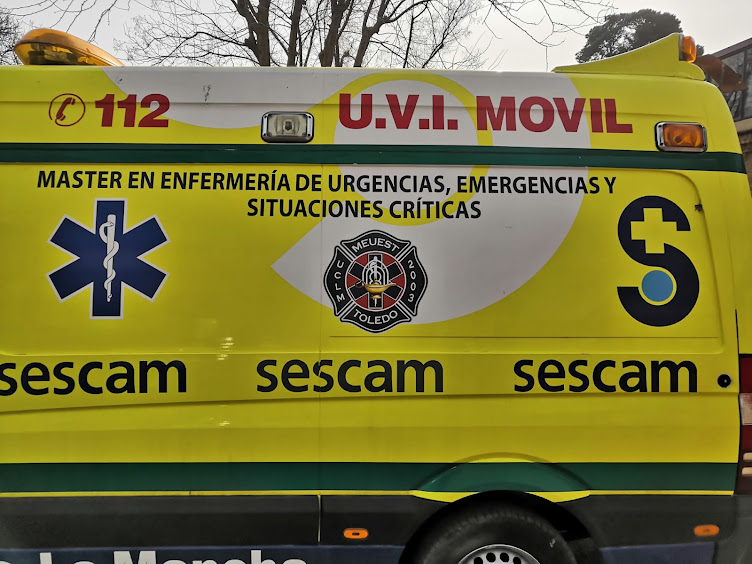http://emcrit.org/preoxygenation/
Archivo sobre prevención de la desaturación durante el manejo de la vía aérea, incluida la intubación, y el uso de relajantes musculares (Annals of Emergency Medicine, marzo 2012).
Artículo de REVISIÒN, llama la atención => las conclusiones.
resumen: cánulas nasales a 15 lpm, a los pacientes que vayamos a intubar, incluso durante la fase de relajación muscular (OXIGENACIÓN APNEICA). Ello no entra en contradicción con la preoxigenación previa (con máscara de reservorio y alto flujo (15 lpm), o CPAP, o Mascarilla de Ambú con válvula de PEEP –cuando la situación lo requiera-, pero DESACONSEJA las ventilaciones previas. Es mejor la oxigenación apneica, con gafas nasales a 15 lpm.
Pearls from the article include:
■Pre-oxygenation extends the duration of safe apnoea in emergency tracheal intubation
■Standard reservoir face masks with high flow oxygen is the recommened source of high FiO2 for pre-oxygenation.
■Patients with normal respiratory drive should be pre-oxygenated for 3 minutes or take 8 maximal inhalation/exhalation breaths
■NIV (non-invasive ventilation) should be considered for pre-oxygenation and ventilation during the onset phase of muscle relaxation in patients who cannot achieve saturations greater than 93-95 % with high FiO2
■Patients should be positioned in the head up position whenever possible. In patients with spinal precautions, reverse trendelenburg can be used
■Apnoeic oxygenation can extend the duration of safe apnoea when used with sedation and muscle relaxants. A nasal cannula set at 15L/min is an effective means of providing this during ED intubations.
■For intubation, patients should be positioned to maximize upper airway patency before and during the apnoeic period, using ear to sternal positioning. Nasal airways and jaw thrust may help to create a patent airway.
Preoxygenation and prevention of desaturation ... [Ann Emerg Med. 2012] - PubMed - NCBI
Archivo sobre prevención de la desaturación durante el manejo de la vía aérea, incluida la intubación, y el uso de relajantes musculares (Annals of Emergency Medicine, marzo 2012).
Artículo de REVISIÒN, llama la atención => las conclusiones.
resumen: cánulas nasales a 15 lpm, a los pacientes que vayamos a intubar, incluso durante la fase de relajación muscular (OXIGENACIÓN APNEICA). Ello no entra en contradicción con la preoxigenación previa (con máscara de reservorio y alto flujo (15 lpm), o CPAP, o Mascarilla de Ambú con válvula de PEEP –cuando la situación lo requiera-, pero DESACONSEJA las ventilaciones previas. Es mejor la oxigenación apneica, con gafas nasales a 15 lpm.
Pearls from the article include:
■Pre-oxygenation extends the duration of safe apnoea in emergency tracheal intubation
■Standard reservoir face masks with high flow oxygen is the recommened source of high FiO2 for pre-oxygenation.
■Patients with normal respiratory drive should be pre-oxygenated for 3 minutes or take 8 maximal inhalation/exhalation breaths
■NIV (non-invasive ventilation) should be considered for pre-oxygenation and ventilation during the onset phase of muscle relaxation in patients who cannot achieve saturations greater than 93-95 % with high FiO2
■Patients should be positioned in the head up position whenever possible. In patients with spinal precautions, reverse trendelenburg can be used
■Apnoeic oxygenation can extend the duration of safe apnoea when used with sedation and muscle relaxants. A nasal cannula set at 15L/min is an effective means of providing this during ED intubations.
■For intubation, patients should be positioned to maximize upper airway patency before and during the apnoeic period, using ear to sternal positioning. Nasal airways and jaw thrust may help to create a patent airway.
■In patients at high risk of desaturation, rocuronium may provide a longer duration of safe apnoea than succinylcholine.
Preoxygenation and prevention of desaturation ... [Ann Emerg Med. 2012] - PubMed - NCBI


No hay comentarios:
Publicar un comentario